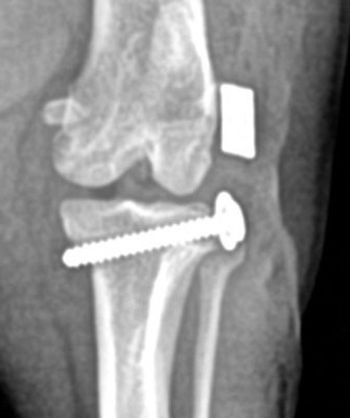
- dvm360 October 2021
- Volume 52
- Issue 10
Dermatologic cytology 101: Tips for collecting samples
At a recent Fetch dvm360® conference, Ashley Bourgeois, DVM, DACVD, also known as The Derm Vet, detailed the multitude of cytology techniques when collecting dermatological samples.
Cytology is among the most valuable diagnostic tests in veterinary dermatology, according to Ashley Bourgeois, DVM, DACVD. During a recent Fetch dvm360® talk, she explained that cytology is used to indicate response to therapy and guide therapeutic treatment changes. What’s more, the results also can help determine whether further testing is necessary (eg, skin biopsy or culture and sensitivity).
To help streamline the cytology collection process for dermatologic patients, Bourgeois outlined a wide variety of tips and tricks. These encompass each technique used in cytology and when they are appropriate to use.
Cytology techniques
Various techniques exist for cytology collection. You may have to adjust which method you use with each unique case depending on the location, patient temperament, and lesion. Bourgeois mentioned that each practitioner has their own preference and it’s best to find the techniques you prefer and then excel in them.
The main equipment required for cytology is a high-quality microscope and plenty of microscope slides.Most commonly used in clinics, the modified Romanowski stain (Diff-Quik; Siemens) offers the best quality of detail when compared with other rapid staining techniques.1 When it comes to slides, Bourgeois recommended having frosted ones to help identify which side the sample is located on (after staining the slide, sometimes it is difficult to tell).
Direct impression
This technique enables you to obtain samples by directly using the slide to collect exudate and debris. Bourgeois emphasized some dos and don’ts of direct impression:
- Do tease open crusted lesions with the slide edge.
- Do move the slide underneath once the crust is lifted and gently press on the underlying tissue.
- Don’t rub back and forth as this can rupture cells.
- Don’t press too firmly as this can break the slide.
Swab
The swab method involves using a cotton-tipped applicator (CTA) to collect samples from hard-to-reach places including ear canals or delicate anatomic regions. Bourgeois recommended rubbing or rolling a CTA onto the affected skin area and then rolling this sample onto the slide.
To sample the ear canal, insert the CTA into the junction of the vertical and horizontal canal, and gently rotate the CTA to collect exudate; then roll the sample onto the slide. If exudative, samples can be heat fixed; however, most don’t have to be if they sit in the fixative.
Tape prep
Tape prep is ideal for dry, scaly lesions or tricky anatomical spaces (eg, lip margins or between the digits). To obtain samples, firmly press the tape’s sticky side on the skin surface repeatedly. Bourgeois described the 2 different methods for staining the tape:
- Place the tape adhesive side down onto the slide, lift the edge of the tape, and apply a drop of purple stain from the Diff-Quik to the slide.
- Stain the tape itself in the red and purple stain and then place it on a slide for analysis. You don’t need to use the fixative (first Diff-Quik stain) as it will remove the sticky portion of the tape and the sample.
Toothpick method for claw folds
This method is useful when there is debris by the claw fold or you have a patient who chews their paws. Investigators2 compared the toothpick, direct impression smear, and tape prep methods for sampling allergic dogs with clinical paronychia and found the toothpick technique to be optimal when identifying Malassezia species overgrowth populations.
To perform this method, Bourgeois said to gently insert the toothpick into the claw fold, scrape material from the proximal claw, and roll the toothpick onto the slide.
Scraping
Scrapings come in handy for scaly, seborrheic samples. Use a scalpel blade to sample dry debris by scraping superficially in one direction, then gently smear the collected material on a slide.
Staining slides
Allow the material to dry after collecting it; the length of time required depends on the sample’s thickness and consistency. You can let it air dry or heat fix it with a hair dryer on low heat on the side of the slide without the sample.
Diff-Quik contains 3 different stains: a fixative (methanol), solution 1 (cytoplasmic, eosinophilic), and solution 2 (nuclear, basophilic).
Dip each slide in each solution 5 to 8 times. Bourgeois recommended allowing excess solution to drain into the jar. Alternatively, brush the end of the slide on a paper towel to remove excess and avoid dilution of the subsequent solution. After solution 2, dip the slide in distilled water or rinse it under tap water with the side lacking the sample exposed to the stream. Then allow it to dry through air drying, hair drying on low heat, or blotting with bibulous paper.
Cytology is key
Cytology is key for helping diagnose, treat, and manage a patient’s dermatological conditions. With a full understanding of its importance and knowledge of the various collection methods, you can inform clients how critical this diagnostic tool is and provide their beloved companion animals with the best care.
References
- Bouassiba C, Osthold W, Mueller RS. Comparison of four different staining methods for ear cytology of dogs with otitis externa. Tierarztl Prax Ausg K Kleintiere Heimtiere. 2013;41(1):7-15.
- Lo KL, Rosenkrantz WS. Evaluation of cytology collection techniques and prevalence of Malassezia yeast and bacteria in claw folds of normal and allergic dogs. Vet Dermatol. 2016;27(4):279-e67. doi:10.1111/vde.12297
Articles in this issue
about 4 years ago
What makes a cat a healthy pet?about 4 years ago
Reunited in person and it feels so good!about 4 years ago
Dental health test kit aids in preventing common disease in catsabout 4 years ago
Pet insurance proves valuable to many clientsover 4 years ago
The Dilemma: Promoting a secure, comfortable workplaceover 4 years ago
10 Things to consider when selling a veterinary practiceover 4 years ago
Canine Osteosarcoma: Teaching an Old Dog New Tricksover 4 years ago
Veterinary cannabis for pain management: The endocannabinoidomeNewsletter
From exam room tips to practice management insights, get trusted veterinary news delivered straight to your inbox—subscribe to dvm360.




